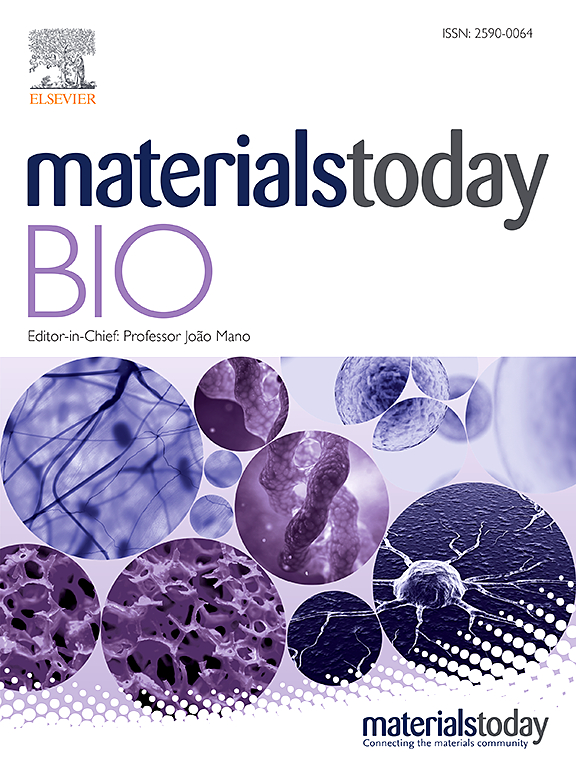Drug-free hyaluronic acid-microneedle with unexpected inhibition activity on benzalkonium chloride-induced corneal inflammation and stromal scarring
IF 8.7
1区 医学
Q1 ENGINEERING, BIOMEDICAL
引用次数: 0
Abstract
Topical instilling of commercial artificial tears (cAT, containing 0.1 % hyaluronic acid) is widely employed to alleviate clinical manifestations of mild dry eye disease (DED) by preventing the pathological change of corneal epithelium. However, it showed limited therapy effectiveness on heavy DED which has further involved corneal stroma, due to its low stroma-available for hyaluronic acid (HA) resulting from the barrier of corneal epithelium. The present study developed a new microneedle-dosage form of cAT (cAT-MN). This cAT-MN can overstride the corneal epithelium and act as a long-lasting protective agent. Compared to cAT dosing (4 times/day), cAT-MN with one treatment exerted significantly higher therapeutic effects on curbing benzalkonium chloride (BAC)-induced corneal stroma scaring as well as alleviating the DED symptoms in the first 5-day BAC exposure; whereas, showed limited effects in a 10-day BAC exposure. To expand the therapy effects, MNs containing various amounts of HA were prepared. Thereinto, HA(6 %)-MN recovered corneal damage to healthy levels, which could be attributed to adding stroma-available for HA both by increasing the amounts of HA-delivery and enhancing HA-permeation. This study explores a new drug-free microneedle-dosage form of cAT to cure corneal stroma disorders which has expanded its indication, promising a wide clinical use in ophthalmology.

求助全文
约1分钟内获得全文
求助全文
来源期刊

Materials Today Bio
Multiple-
CiteScore
8.30
自引率
4.90%
发文量
303
审稿时长
30 days
期刊介绍:
Materials Today Bio is a multidisciplinary journal that specializes in the intersection between biology and materials science, chemistry, physics, engineering, and medicine. It covers various aspects such as the design and assembly of new structures, their interaction with biological systems, functionalization, bioimaging, therapies, and diagnostics in healthcare. The journal aims to showcase the most significant advancements and discoveries in this field. As part of the Materials Today family, Materials Today Bio provides rigorous peer review, quick decision-making, and high visibility for authors. It is indexed in Scopus, PubMed Central, Emerging Sources, Citation Index (ESCI), and Directory of Open Access Journals (DOAJ).
 求助内容:
求助内容: 应助结果提醒方式:
应助结果提醒方式:


